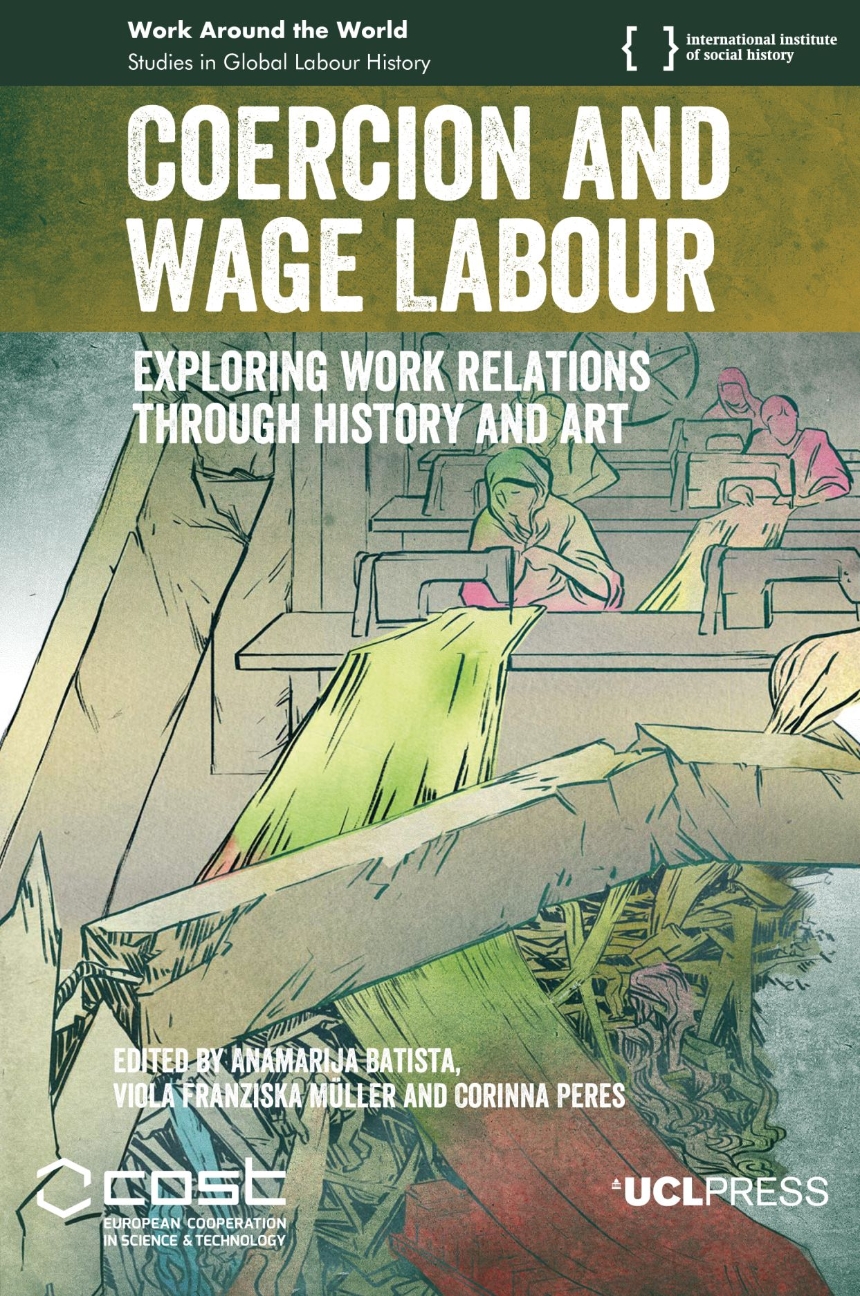9781800085398
9781800085404
Novel histories of people who experienced physical, social, political, or cultural compulsion in the course of paid work.
Broad in scope, Coercion and Wage Labour examines diverse areas of work including textile production, war industries, civil service, and domestic labor, in contexts from the Middle Ages to the present day. This book demonstrates that wages have consistently shaped working people’s experiences and failed to protect workers from coercion. Instead, wages emerge as versatile tools to bind, control, and exploit workers. Remuneration mirrors the distribution of power in labor relations, often separating employers physically and emotionally from their employees and disguising coercion.
The book makes historical narratives accessible to interdisciplinary audiences. Most chapters are preceded by illustrations by artists invited to visually conceptualize the book’s key messages and to emphasize the presence of the body and landscape in the realm of work. In turn, the chapter texts reflect back on the artworks, creating an intense intermedial dialogue that offers mutually relational “translations” and narrations of labor coercion. Other contributions written by art scholars discuss how coercion in remunerated labor is constructed and reflected in artistic practice. The collection serves as an innovative and creative tool for teaching and raises awareness that narrating history is always contingent on the medium chosen and its inherent constraints and possibilities.
Broad in scope, Coercion and Wage Labour examines diverse areas of work including textile production, war industries, civil service, and domestic labor, in contexts from the Middle Ages to the present day. This book demonstrates that wages have consistently shaped working people’s experiences and failed to protect workers from coercion. Instead, wages emerge as versatile tools to bind, control, and exploit workers. Remuneration mirrors the distribution of power in labor relations, often separating employers physically and emotionally from their employees and disguising coercion.
The book makes historical narratives accessible to interdisciplinary audiences. Most chapters are preceded by illustrations by artists invited to visually conceptualize the book’s key messages and to emphasize the presence of the body and landscape in the realm of work. In turn, the chapter texts reflect back on the artworks, creating an intense intermedial dialogue that offers mutually relational “translations” and narrations of labor coercion. Other contributions written by art scholars discuss how coercion in remunerated labor is constructed and reflected in artistic practice. The collection serves as an innovative and creative tool for teaching and raises awareness that narrating history is always contingent on the medium chosen and its inherent constraints and possibilities.
Table of Contents
List of figures List of tables List of contributors Acknowledgements Introduction 1 Coercion and wage labour in history and art Anamarija Batista, Viola Franziska Müller and Corinna Peres **Part I: Binding the workforce** Chapter frontispieces - Collages © Tim Robinson, 2022 2 In the name of order: (Im)Mobilising wage labour for the Ottoman naval industry in the nineteenth century Akin Sefer 3 Contracts under duress: Work documents as a matter and means of conflict in the Habsburg Monarchy/Austria in the late nineteenth and early twentieth centuries Sigrid Wadauer 4 Working for the enemy: Civil servants in occupied Serbia, 1941-1944 Nataša Milicevic and Ljubinka Škodric 5 Exploitation and care: Public health aspirations and the construction of the working-class body in the Budapest Museum of Social Health, 1901-1945 Eszter O?ze Part II: Confronting coercion Chapter frontispieces - Aquarelles © Dariia Kuzmych, 2022 6 Subdued wage workers and textile production in Western and Islamic medieval sources” Colin Arnaud 7 ‘One gets rich, one hundred more work for nothing’: German miners in Medici Tuscany. Gabriele Marcon 8 Entangled dependencies: The case of the runaway domestic worker Emine in late Ottoman Istanbul, 1910. Müge Telci Özbek 9 The dilemma of being a ‘good worker’: Cultural discourse, coercion and resistance in Bangladesh’s garment factories. Mohammad Tareq Hasan 10 Border plants: Globalisation as shown to us by the women living at its leading edge. Eva Kuhn *Part III: Manipulating labour relations ** *Chapter frontispieces - Graphic art © Monika Lang, 2022 11 Negotiating the terms of wage(less) labour: Free and freed workers as contractual parties in nineteenth-century Rio de Janeiro Marjorie Carvalho De Souza 12 Constructing debt: Discursive and material strategies of labour coercion in the U.S. South, 1903-1964 Nico Pizzolato 13 Obligatory contributions to society: Student foreign-language guides as seasonal wage workers in socialist Bulgaria, 1970–1980s Ivanka Petrova 14 To put a human face on the question of labour: Portraiture and the Australian-Pacific indentured labour trade Paolo Magagnoli 15 Afterword - Word and image in communication: ‘Translation loop’ as a means of historiographical research Anamarija Batista

